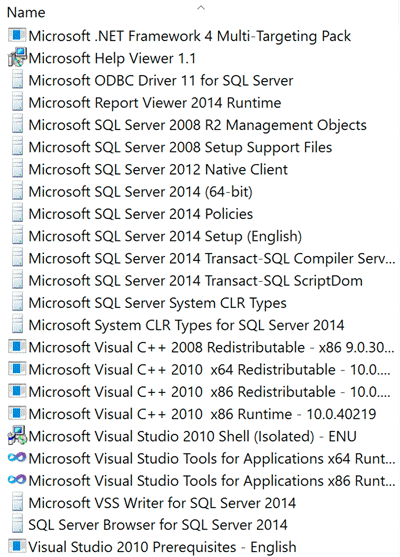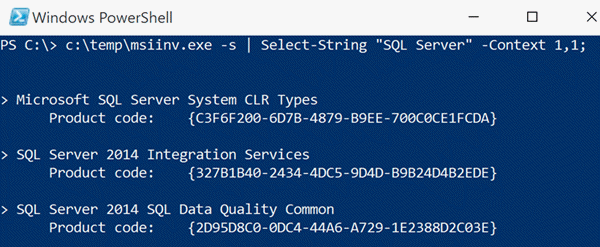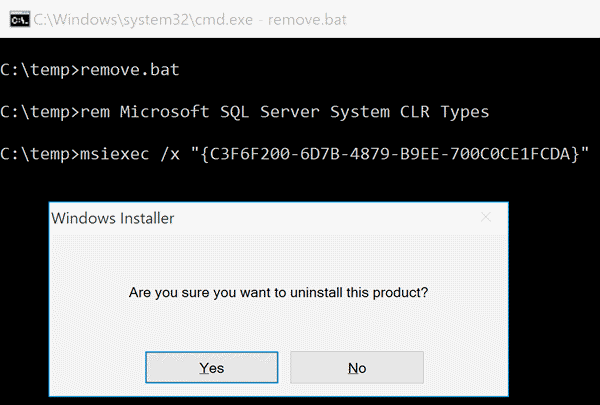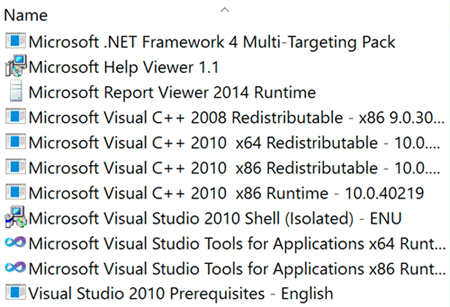By: Aaron Bertrand | Comments (65) | Related: > Install and Uninstall
Problem
There are scenarios where SQL Server is difficult or impossible to uninstall, upgrade, or replace (and these can block you from installing a new version or using a specific named or default instance):
- An expired Evaluation Edition:
Evaluation period has expired. For information on how to upgrade your evaluation software please go to http://www.microsoft.com/sql/howtobuy
- An expired Management Studio:
Your Microsoft SQL Server Management Studio evaluation period has expired.
You can get a key to extend your trial by registering this copy of Microsoft Management Studio online. You may also purchase a key to activate the product.
- Unsupported operating system (after an OS upgrade):
The operating system on this computer does not meet the minimum requirements for SQL Server xxxx.
- Missing MSI files, e.g.:
Slp: Target package: "C:\...\sql_engine_core_inst.msi"
Slp: InstallPackage: MsiInstallProduct returned the result code 2.
- Too many instances to remove individually, or other various errors during uninstall.
In these situations, is there a way to cleanly uninstall SQL Server?
Solution
There is a built-in command called msiexec which has an uninstall
parameter (-x). This command can be used to remove stubborn programs
through brute force. First, though, you need to get an inventory of the GUIDs that
represent the programs you need to remove. All you see in the Control Panel are
the friendly names, as you can see here:

(This is a brand new system where I installed multiple SQL Server 2014 components
in order to demonstrate my approach of cleanly removing them without using the Control
Panel or SQL Server's own setup, but rather using msiexec and the GUIDs
for the products.)
You can get the GUID associated with each installed product by searching around
the registry, but I would rather use the MSI Inventory tool, which you can download
(msiinv_new.zip) from
this OneDrive folder, and extract msiinv.exe to a folder, say
C:\temp\.
Once that file is there, you can open a PowerShell console, and run the following code:
c:\temp\msiinv.exe -s | Select-String "SQL Server" -Context 0,1
Here is a truncated version of what my output from that command looks like (there is a benign error you can ignore):

This output is marginally useful for now; I can quickly scan the list and see
all the GUID codes for the products I want to remove, and start mentally filtering
any out as necessary. I could manually copy and change the output to feed each GUID
individually to msiexec, but ultimately where I want to end up is a
set of commands I can run directly from the command line, for example:
rem Microsoft SQL Server System CLR Types
msiexec /x "{C3F6F200-6D7B-4879-B9EE-700C0CE1FCDA}"
rem SQL Server 2014 Integration Services
msiexec /x "{327B1B40-2434-4DC5-9D4D-B9B24D4B2EDE}"
rem SQL Server 2014 SQL Data Quality Common
msiexec /x "{2D95D8C0-0DC4-44A6-A729-1E2388D2C03E}"
...
And I get there with a little help from my good buddy, co-worker, and PowerShell officionado, Allen White (@SQLRunr):
$a = c:\temp\msiinv.exe -s | Select-String "SQL Server" -Context 1,1; $a = $a -replace "Product code:","msiexec /x """; $a = $a -replace "Language:","rem Language:"; $a = $a -replace "Package:","rem Package:"; $a = $a -replace ">", "rem"; $a = $a -replace "\t", ""; $a = $a -replace "}","}"""; $a | Out-File c:\temp\remove.bat -encoding ascii;
Now, you can open up remove.bat, look through the list, and remove
any products you *don't* want to uninstall. The format will look like this, almost
exactly how I wanted them:
rem Microsoft SQL Server System CLR Types
msiexec /x "{C3F6F200-6D7B-4879-B9EE-700C0CE1FCDA}"
rem SQL Server 2014 Integration Services
msiexec /x "{327B1B40-2434-4DC5-9D4D-B9B24D4B2EDE}"
rem SQL Server 2014 SQL Data Quality Common
msiexec /x "{2D95D8C0-0DC4-44A6-A729-1E2388D2C03E}"
...
Now run remove.bat from the command line. You'll get prompts like this:

And you'll also likely see some confirmation dialogs from User Account Control.
You may get some errors or dependency warnings, and to avoid some of the prompts,
you'll want to make sure all related services have been manually stopped. You might
want to run from an elevated command prompt (perhaps even
using the "super admin" if you're on Windows 10), and also play with some of
the switches to msiexec, like /quiet. You can enable
/quiet by changing the second last line in the Powershell script above
to:
$a = $a -replace "}","}"" /quiet";
Also, you may have to run the script twice to completely remove things that failed
the first time due to dependency order. The second time around, if you don't use
/quiet, you will see multiple notifications that the product you're
trying to remove is no longer installed:

But after running through it twice, this should leave you with a much cleaner Control Panel:

The remainder of these items should really be much easier to remove manually;
or, you may not want to bother; or, you could repeat the process above with different
arguments to Select-String. I wanted to focus on a single run-through
with the SQL Server components, since they are the ones that prove most problematic.
Summary
This is not the most intuitive approach in the world, but I hope it helps some of you remove stubborn, sticky SQL Server components from your systems. It constitutes a bit more work than normal uninstall operations, but when Control Panel or SQL Server Setup won't cooperate, this might be the next best thing. (Note that this procedure will not be effective in completely removing a clustered instance of SQL Server; I wouldn't even try.)
Next Steps
- Try this approach if you have a system with SQL Server components that have expired or can't be removed in the usual way.
- See these related tips and other resources:
About the author
 Aaron Bertrand (@AaronBertrand) is a passionate technologist with industry experience dating back to Classic ASP and SQL Server 6.5. He is editor-in-chief of the performance-related blog, SQLPerformance.com, and also blogs at sqlblog.org.
Aaron Bertrand (@AaronBertrand) is a passionate technologist with industry experience dating back to Classic ASP and SQL Server 6.5. He is editor-in-chief of the performance-related blog, SQLPerformance.com, and also blogs at sqlblog.org.This author pledges the content of this article is based on professional experience and not AI generated.
View all my tips






